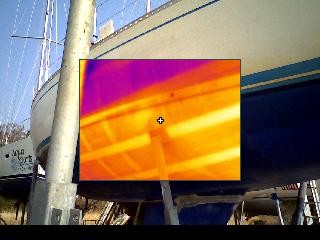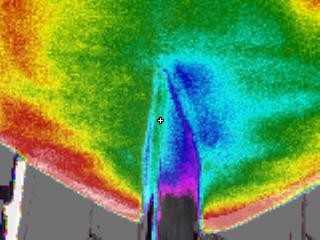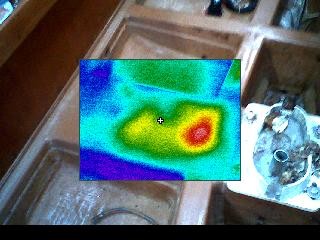Do you want to be informed on new Posts on this Thread? (members only)
| S&S Swan Maintenance - Hull bulging |
|---|
|
Join Date: 26 March 2011
Posts: 4 |
||
|---|---|---|
|
Hull bulging |
|
Join Date: 02 January 2008
Posts: 1547 |
||
|---|---|---|
|
Dear Philip
|
|
Join Date: 28 July 2008
Posts: 79 |
||
|---|---|---|
|
Interested to hear the recommendation of FTIR. Fully support the use of this, having used it on our Swan two years ago to help diagnose some hull/keel issues. Have also seen it used on an Oyster 70 to define extent to osmosis. Interestingly it also highlighted they had some grounding damage at the leading edge of the keel/hull joint; something they were not aware off. Very quick and cheap process. First picture is a nice healthy looking hull with longitudinal and frames clearly visible. Second picture is extend of delamination on the aft STBD hull keel joint green area, with significant water ingress showing in the blue area. Last picture is damage to an internal frame; this is interesting as there was no visible sign of damage here.    |
|
Join Date: 30 January 2007
Posts: 461 |
||
|---|---|---|
|
What you show is extremely interesting and I wish I could understand more (I am pretty familiar with FTIR spectroscopy of microscopical samples under laboratory conditions). |
|
Join Date: 28 July 2008
Posts: 79 |
||
|---|---|---|
|
All, I must offer my apologies to the Forum. The above images/survey was not undertaken using FTIR, but thermographic. It was carried out by Graham Connor, www.intys.co.uk. (The case studies on his website are interesting.) If anybody has a basic understanding of the differences between the two techniques and the relative pros and cons I would be most interested. Unfortunately various commitments have not allowed me the time to investigate. Many thanks to Lars for pointing out my error. All the best, Adrian Tiderace II |
|
Join Date: 29 January 2007
Posts: 1020 |
||
|---|---|---|
|
Dear Adrian, |
|
Join Date: 30 January 2007
Posts: 461 |
||
|---|---|---|
|
I gladly accept the request to explain the difference between thermography and FTIR spectroscopy and I promise I will try to be as clear as possible without being too technical. I am afraid it will not be a short explanation so I need the permission/advice of Matteo before going ahead. |
|
Join Date: 17 November 2009
Posts: 38 |
||
|---|---|---|
|
I gladly accept the request to explain the difference between thermography and FTIR spectroscopy and I promise I will try to be as clear as possible without being too technical. I am afraid it will not be a short explanation so I need the permission/advice of Matteo before going ahead. Both techniques mentioned above are passive radiometric measurement techniques which quantify emitted radiation. So it would be the case that the FTIR method is not per se optimal to reveal structural characteristics such as delamination, expect to the extent these structural characteristics are well correlated with the thermal properties of the structure. Whilst this correlation is logical to expect, it's unknown specific value assures significant uncertainty in any inferred structural assessment. |
- Threads : 1703
- Posts : 10221
- Members: 821
- Online Members: 2

